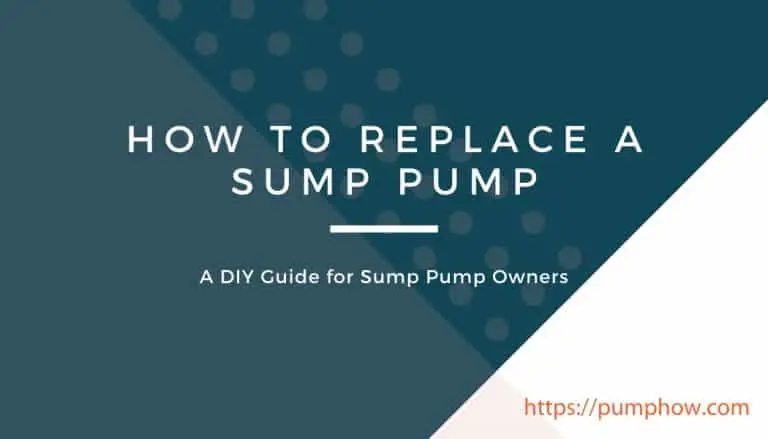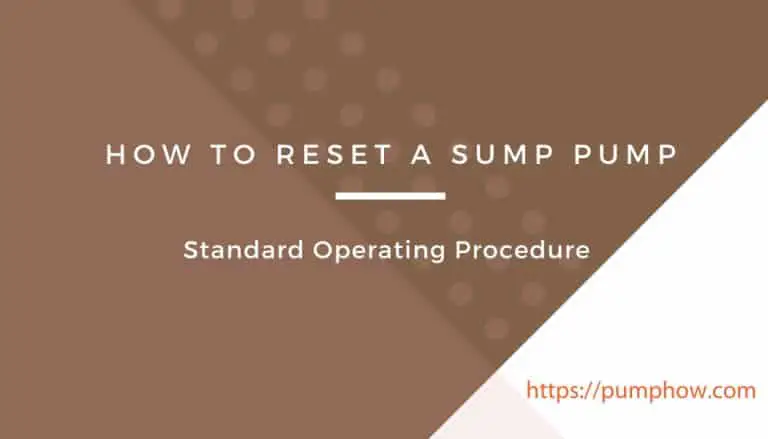A clogged sump pump is no better than a completely non-functional sump system. Truth be told, it’s worse than that because you remain cool counting on the pump to do its job while it’s not!
Once you’ve finished the installation without certain measures to prevent clogging, you’ve little to stop it. You would rather want to unclog it. First, you should find out the cause and then take approaches to fix it.
It may seem a lot, but in practice, it’s not. Read this article until you reach the end to find out everything about clogged sump pump system and how to unclog a sump pump in such situation.
Probable Causes behind a Clogged Sump Pump
Dirt, debris, tiny plastics, minuscule solids, and other materials are often responsible for this issue. In other words, anything other than liquid that fits in anywhere within the pump setup and discharge line can be pointed out as the culprit.
Apart from these materials, lack of inspection and periodic maintenance further deteriorates the situation. Clogging may cause harm in different ways occurring to the parts of the entire system.
The pump itself along with the perimeter drain may get clogged, and so may the discharge pipe. The float switch may not work due to clogging. A frozen discharge pipe or drainage system is very common, particularly when it’s winter. Again, iron bacteria may affect the system.
Following are the quick explanations of all possible clogging scenarios and the most pragmatic ways to deal with them.
How Do the Pump and Drain Get Clogged?
A drainage system installed across the perimeter is a part of the sump pump installation procedure. The purpose is to collect liquid from the floor and the walls before they become the cause of basement flooding.
If these drains are designed to be like wide-open gaps to maintain a parallel position with the floor, debris coming from your basement floor may find their way into them and clog them eventually. Even the pump isn’t spared.
Some drains are often set up with direct contact with the mud that exists beneath the basement floor. It’s an area that we call the “mud zone”.
Over time, the mud seeps into a home’s drain system, and causes clogging to the system, and makes it almost inaccessible during the maintenance. It’s a toilsome task to tackle the situation because you can’t help jackhammering your floor open to access the system.
The Way out
You can install the drainage system right on top of your home’s foundation footer keeping a safe distance from wherever the mud zone is.
Keeping a gap in the drainage system is essential since the water that comes from your basement walls has to be collected. In this case, you can use a 3/8-inch wall flange which will work as a hindrance. It typically extends vertically and blocks the entry of the debris into the sump pump.
To allow yourself or a plumbing professional a comfortable access to the system, you can install a few ports or openings. This way, you can avoid taking up the jackhammer and open up the floor, which is a hard job. Thus, you’ll get an open design with effective measures in place to resist clogging.
How Does the Float Switch Get Clogged?
Without the float switch, the sump isn’t going to sense if it’s time to stop or start running. That’s how you can define the role of a switch which is no good being clogged or jammed.
If the float itself isn’t defective, another way that makes it unusable is the dirt that may have been in the pump and then got to the switch to cause it to get stuck. When a float switch can’t get back to its regular mode because it’s stuck in either the ‘on’ or ‘off’ state, the pump can’t start or stop.
If the pump can’t stop, it’ll burn out and then fail eventually. If it can’t start, the basement won’t be rid of the water, and flooding becomes only a matter of time. Either way, it’s very close to a disaster.
The Way out
You can fix a metal rod with the switch so that it sits on the rod that will not only protect it but also guide it all the way up and/or down maintaining a specific route. If DIY isn’t an option, you can use an expert’s supports.
The easiest way to keep the switch free of dirt, you can use a perforated plastic liner and a durable airtight lid. These items will keep things okay. Learn more about float switches from this article.
How Does the Discharge Line Get Affected?
When it comes to clogging, you can’t rest after checking the pump or the float. Everything may seem to run quite nicely, but the pumping action may still not bring any result.
It only indicates one thing that the discharge line that has been installed outside the home has become clogged or frozen. Chances are good that you won’t even suspect a thing before a huge load of water hits the basement.
Doing some inspection every now and then is highly recommended because you can’t really wait until flooding occurs. However, you need to inspect the whole sump system every month or quarter.
The Way out
You can get a few grated openings from the market and use them at the mouth of the discharge lines. Unlike a blocker, these openings create an alternative way for the floodwater to go out of the basement. Thus, flood can be prevented to some extent.
Which Other Way Does the Drainage Get Clogged?
For an old sump system, iron ochre can be a serious problem. It’s actually a kind of gelatinous ooze that looks like rust. Iron bacteria are the most typical element to cause this. Iron ochre survives through the oxidization of ferrous iron. It’s available everywhere in the world.
Ochre is a microscopic organism that’s not known to have any serious health effect other than foul smell and stains on the things it rests on. If the ochre gets worse, it may affect the regular taste of water. However, its effect on the drainage system isn’t negligible as it may clog it well enough to cause basement flooding.
The Way out
Since it’s more of a bacteria problem, you can use a specialized guarding system. A few brands sell such systems with removable lids so that users can clean the clog easily.
So far, we’ve discussed how any sump system may become clogged and how efficiently you can prevent them. What if it’s too late for you to follow these preventive measures? Well, you can do the unclogging yourself.
9 Steps On How To Unclog a Sump Pump System
It’s an inexpensive project since most homeowners have the required items at home. Here’s the list of things you should gather.
- Flashlight or Headlamp or flashlight
- Waterproof Hand Gloves
- Damp Rag
- A Bucket
- A Trap (Not Compulsory)
Here goes the list of actions you need to take just as the following sequence suggests.
- Start with the outlet that rests on the discharge pipe. Due to its position in your landscape, debris/waste make it vulnerable to clogging.
- Remove whatever you see is blocking the discharge hose or pipe. Check its end properly because that’s where something may get stuck.
- Disconnect the sump pump from the power source and the float from its electrical outlet. Then, remove the lid that covers the sump basin.
- Inspect the small opening or screen through where the liquid/water enters your pump.
- Use your flashlight to look into the pump while keeping it in the sump basin. You may not be able to see the intake of the pump clearly. In that case, take it out of the sump pit and place it inside the bucket. If you can put it on the floor without a problem, then do it instead.
- Remove the debris (if any) that’s blocking the pump’s inlet.
- Start working on the sump basin. Remove as much silt as you can and wipe up the accumulated debris that might be clinging to the pit walls.
- Put the pump in the pit again and ensure its level position. Keep it in the center putting it on the ground.
- Then, connect the pump to the power source and test its working status. If it works, you can put the lid back on. The lid may seem too fragile or worn to be usable. Get a new lid.
This is how you can make clogging the least of your worries. Finally, we would like you to know a couple of things.
While cleaning the pump, you can do it more rigorously for preventing any reclogging situation in the near future. For the pump isn’t so heavy, you can carry it outside and rinse it thoroughly using a strong flow/stream of water. This action will help you even with the stickiest dirt.
Some residences have downspouts that are linked to the foundation drain which leads to the sump system. If yours are installed the same way, use a screen for the downspouts to prevent leaves and different solid particles from getting into the sump.
Final Words
The key to allowing your sump pump to play its ‘good’ role is to inspect and keep it free of things that impede its actions. Got anything else to know about this? Feel free to shoot a message!






